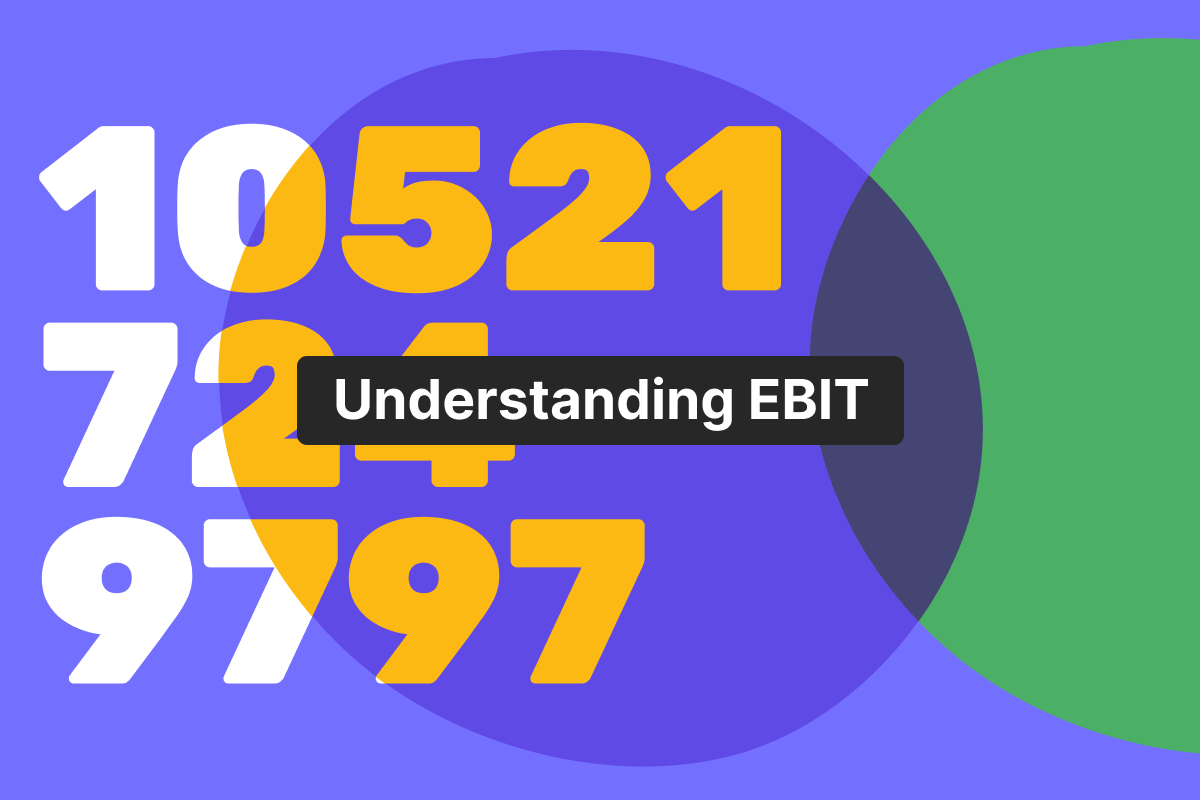Genome Blog / articles / Cash flow forecasting 101: how to ensure liquidity and financial stability
Aug. 29, 2024
Cash flow forecasting is not some fancy term; it is a significant tool for any business. It’s all about predicting cash inflows and outflows for the future.
In the article, our team will explain how it works, provide examples of the best software and tools for cash flow forecasts, and answer the most common questions about determining future cash flow.
What is a cash flow forecast?
A cash flow forecast is a financial tool that estimates the amount of all the money expected to flow in and out of a company over a specific period, from a few weeks to a quarter or even several years.
Understanding cash flow is crucial for making more well-informed business decisions. Forecasting plays a role in the process as well and has several benefits. The main and most significant purpose of cash flow forecast is managing business liquidity. In short, it allows companies to ensure they have enough money stored to meet their obligations – paying taxes, salary, credit depts.
If your business has secured liquidity and dealt with obligations, you can move to another important task – financial planning. Predicting future cash positions can be challenging, but it helps make decisions in terms of investments and business expansion.
In other words, if you see potential market growth and are confident about the revenue growth, you could consider a business expansion investment to have more cash coming.
Good business liquidity management and smart planning are based on quality risk management.
Here’s a simple example: Managing business liquidity is about how much money a company has now/will have in the future, and financial planning is about what a business can do to make more cash. Risk management is about what a company shouldn’t do to maintain its position by outlining potential risks.
Identifying potential cash shortages and how much cash will remain in advance allows businesses to take proactive measures and correct their strategy.
Also, a cash flow forecast and budgeting are different. The company’s budget is your company’s financial plan for your future expenses and income. Meanwhile, a cash flow forecast estimates the expected inflows and outflows for a set period.
Components of a cash flow forecast
What components are required for an accurate cash flow forecast and to account for the cash? What you need to consider for it are cash inflows and cash outflows.
Inflow components
Cash inflows include cash coming from the company’s main activity (aka running cash flow), loan proceeds, investment income, tax refunds, other sources of incoming funds, and non-sales income.
- Sales revenue;
- Accounts receivable;
- Other income.
Outflow components
Cash outflows encompass payments for operating expenses (rent, utilities, salaries), capital expenditures, debt repayments, taxes, and other outgoing payments.
- Operating expenses;
- Cost of Goods Sold (COGS);
- Accounts payable;
- Tax payments;
- Loan repayments;
- Capital expenditures;
- Dividends.
Steps to create a cash flow forecast
Now that we know the main components of the cash flow forecasting process, let’s see how it happens.
1. Gather financial data
First and foremost, put together all the necessary up-to-date financial data and previous years’ figures that indicate the sources of income or expenses, including balance sheets, actual income, and actual cash flows. Determine the period you will be planning for, i.e., 3 months. Estimate the opening cash balance you expect to have at the beginning of the forecast period, as well as your running total for the period.
2. Estimate cash inflows
Estimate and calculate all possible future sources of money coming, such as revenue, loans, investments, or any other forms of income. Calculate all inflows for each month separately.
3. Estimate cash outflows
Similarly, calculate all expected cash outflows for each month separately, including expenses like rent, salaries, utilities, loan repayments, and taxes. Use past expenditures as a guide, adjusting for any anticipated changes.
4. Calculate net cash flow
Now, it’s time to calculate the expected net cash flow (not to be mixed up with net income), which is the difference between the cash inflow and cash outflow. Here are some figures for the cash flow forecast example:
- For March: $13,600 (overall expected inflows) – $6,230 (overall expected outflows) = $7,370 (net cash flow).
- For April: $15,250 (overall expected inflows) – $7,100 (overall expected outflows) = $8,150.
- For May: $14,510 (overall expected inflows) – $7,650 (overall expected outflows) = $6,860.
These figures will help you determine if your company will have a positive cash flow figure or a negative cash flow figure. Simply put, will have a cash surplus or deficit based on your expected inflows and outflows.
5. Review and adjust the forecast
Check the expected net cash flow to determine your projected income and if your business will be able to manage the liquidity and invest in the future. If you’re expected to have cash surpluses, you’re on the right track. Don’t forget to review your forecast to account for changes in market conditions, business operations, or any unexpected expenses or revenues.
Methods of cash flow forecasting
There are several techniques used in cash flow forecasts, each serves its own purpose.
- Direct method. This method involves forecasting cash inflow and outflow for a specific period. The cash flow forecasts are made based on existing bank payments and transactions. Simply put, it is a detailed but short-term view of cash movements.
- Indirect method. This method adjusts net income for future periods, including non-cash income and changes in working capital. It’s more about companies’ assets and forecasting revenue in the long term.
- Rolling forecasts. These involve continuously updating forecasts based on actual performance and changing market conditions. This method is used to predict the financial future of a business over a continuous period based on historical data.
Choosing the right forecasting method depends on the nature of your business, the complexity of cash flows, and the availability of data. For detailed and frequent cash flows, the direct method may be preferable. For strategic planning, the indirect method can offer a broader view. Rolling forecasts are ideal for businesses that require ongoing updates and a long-term forecast.
Tools and software for cash flow forecasting
In general, a small company can handle its own cash flow forecast manually using Excel or Spreadsheet. You will need to create a week or month column, cash inflow/outflow/net cash flow columns, and opening balance/closing balance columns.
For more professional cash flow planning and more exact estimates, you can try one of these solutions:
QuickBooks. A popular accounting software with cash flow management features, suitable for small and medium-sized businesses.
Xero. This one provides cash flow forecasting and financial reporting, ideal for small businesses and accountants.
Float. Float can be integrated with accounting software to provide real-time cash flow insights and scenario planning.
PlanGuru. This tool offers budgeting, forecasting, and financial analysis tools suitable for businesses looking for more comprehensive financial plans.
Adaptive Insights. A cloud-based solution for budgeting, forecasting, and reporting, suitable for larger organizations.
Sage Intacct. It provides robust financial management tools with cash flow forecasting capabilities that are designed for growing businesses.
Anaplan. Anaplan offers an enterprise-level planning and forecasting platform ideal for complex, large-scale financial modeling.
Best practices for accurate cash flow forecasts
To keep good track of your business finances and have an accurate cash flow forecast accounting for variable costs, you need to do the following to be a forward-planning business:
- Use old, relevant data, such as past financial statements and cash flow reports, to identify trends, patterns, and what makes you earn huge amounts.
- Do and use the research that shows the cycles your business goes through throughout the year: some months will be slower than others, which needs to be accounted for when dealing with cash flow forecasting.
- Don’t use just one forecast as a baseline: you need to come up with different possible scenarios that can influence your cash flow and apply these to forecasts.
- Utilize software and tools to automate data collection, analysis, and reporting to improve accuracy and efficiency.
If you’re striving for accuracy when it comes to your financial operations, we recommend opening an account at Genome.
Our electronic money institution is secure, using two-factor authentication for all your outgoings, logins, and more! Keep your money in different currencies (EUR, USD, GBP) by opening multi-currency accounts in seconds.
Get notified about all transactions and other bills, send money easily, and order a virtual or a physical Visa debit card to complete your banking experience.
Conclusion
The forecasting process for all the cash you will be spending and receiving in the future is an essential part of your money-related planning. Using the tools we listed in the article can greatly help, but we encourage you to constantly double-check, update, and adjust the figures for the most accurate results.
FAQs
What is the primary purpose of a cash flow forecast?
The primary purpose of a cash flow forecast is to project the timing and amounts of all the cash a business will earn and spend over a specific period. It allows businesses to anticipate cash shortages and have enough cash in their bank accounts to plan for investments, as well as ensure sufficient liquidity.
How often should a cash flow forecast be updated?
Even if you’re a new business, a cash forecast should be updated regularly, typically quarterly, to reflect the most recent financial data and market conditions. Regular updates will help large, medium, and small business owners respond promptly to changes, ensuring more accurate and relevant forecasting.
Can I create a cash flow forecast manually?
Yes, you can create a cash flow forecast manually using spreadsheets or templates to plan ahead with your money strategy.
How accurate do cash flow forecasts need to be?
Cash flow forecasts should aim for a high degree of accuracy to support effective financial planning. Thus, you might want to double-check these results or use more than one tool for tracking them.





